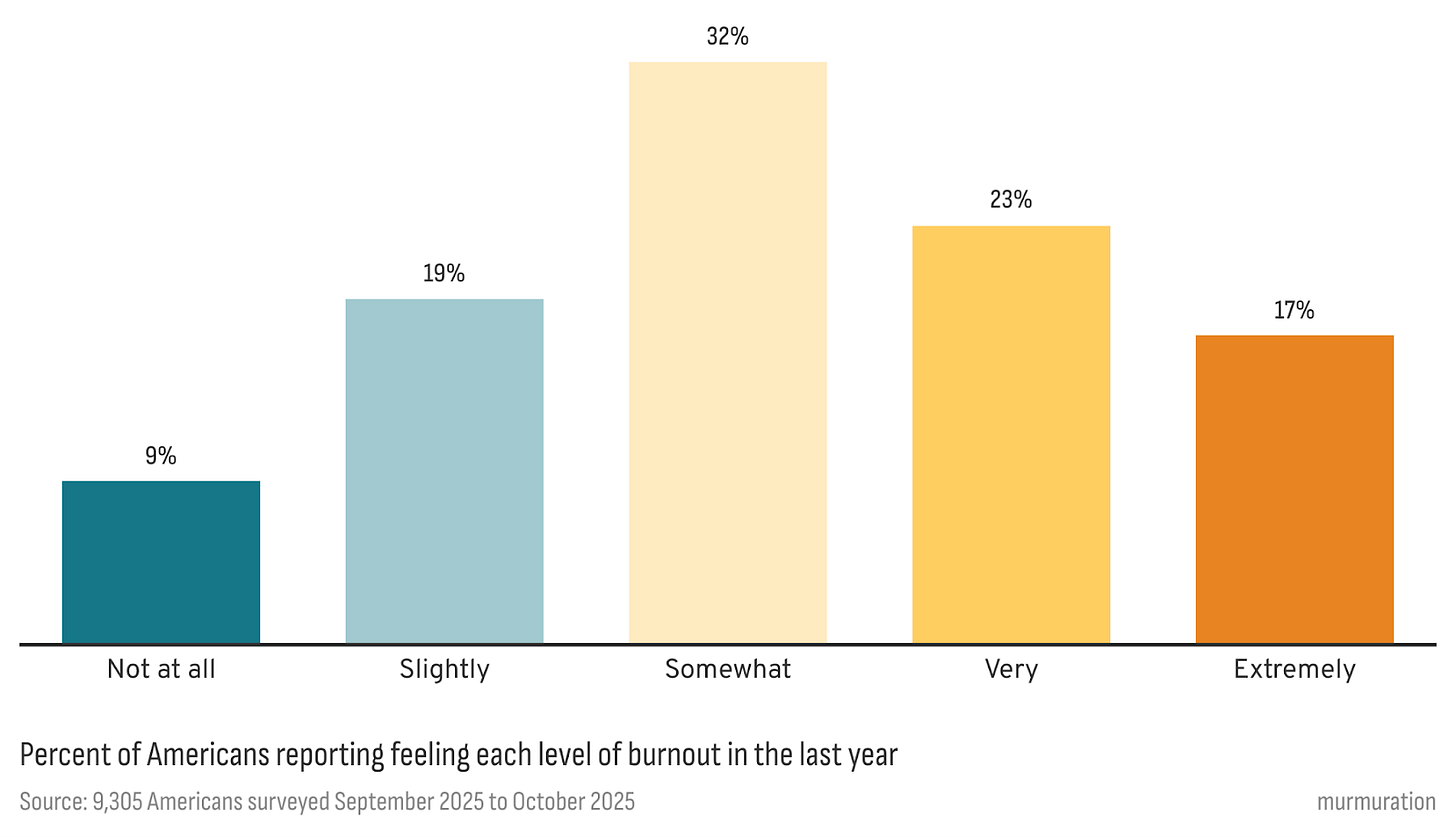When we talk about burnout, it often sounds like an individual experience. Too many late nights at work, the endless ping of notifications, the weight of caring for family or too much doomscrolling on social media. But our recent data tell a bigger story: burnout is not just a personal problem. It’s reshaping how (and whether) people can participate in civic life.
Across the country, 91% of people report at least some burnout; and nearly half of those people say they feel very or extremely burnt out. That fatigue doesn’t end at work. It leaks into school boards, neighborhood groups, mutual aid, and the everyday ways we show up for one another. Communities depend on people showing up for one another, but you can’t pour from an empty cup.
The Two Faces of Burnout
The data suggest that burnout can be driven by two very different forces.
One driver is “personal strain”. Burnout rises alongside financial instability, lower life satisfaction, and weaker community well-being. People who are extremely burnt out are far more likely to say they’re getting by or struggling than those with no burnout. When rising prices, childcare, debt, and unpredictable hours set the rhythm, the price of participation in terms of time and attention pushes people out. Asking them to “be more engaged”, even in ways that can improve their lives, is asking them to spend energy that’s already in short supply.
The second driver is “political overload”. We see it higher in people who are worried about the direction of the country and the folks who talk politics, attend town halls, and post to social media (see below). In addition, those who are extremely burnt out are the most likely to interact daily with people who hold different political views (34%). This pattern suggests an awareness of the psychological costs of engagement: these individuals are approximately 3 to 4pp more likely than others to report a desire to be less engaged.
Final Thoughts
Communities depend on people showing up for each other. If nearly half the country feels very or extremely burnt out, we can’t expect engagement to thrive on willpower alone.
The good news is that the desire to connect hasn’t vanished. Even in exhaustion, people want to belong and contribute. That means the path forward isn’t about asking more of people. Perhaps it’s about making engagement lighter, more accessible, and more restorative.
The questions we’re left with are urgent:
How do we rebuild community life so that participation restores rather than drains?
What supports can help neighbors show up when energy is scarce?
How do we close the frustration gap between wanting to engage and being able to?
Burnout may be widespread, but it doesn’t have to define civic life. If communities can acknowledge exhaustion and create pathways that feel possible, then maybe showing up for one another can shift from being one more burden to becoming a genuine source of strength.
Civic life thrives when people do.
Murmuration is a non-profit that strengthens community-driven change at the local level. By equipping local organizations with powerful data, technology, and insights, Murmuration helps them amplify community voices, build collective power, and drive solutions that reflect the lived realities of the people they serve.murmuration.org




